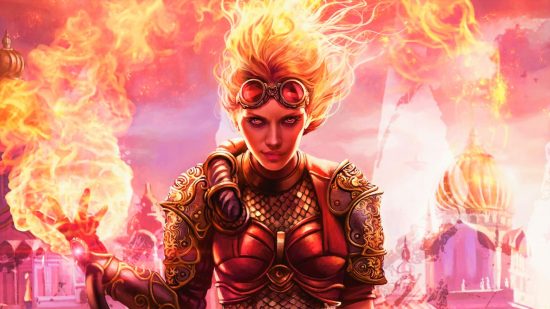If you want to get better at Magic: The Gathering, understanding the different MTG deck archetypes is key. A handful of core archetypes describe the different underlying strategies of numerous decks, from fast-paced Aggro to complex Combo. If you want to get better at deck-building, it makes sense to know what your deck actually does. This MTG deck types guide is a solid stepping stone to deck-building success.
Before we dive deep into deck types, here are a few other Magic: The Gathering guides to up your game. We can show you the best MTG Arena decks in the current meta, as well as the upcoming MTG sets we expect to shake up the trading card game. We can also explain the major MTG creature types and best MTG Commanders, in case you need more deck ideas.
Here’s each of the MTG deck archetypes explained:
MTG Aggro
The name ‘MTG Aggro’ comes from the word ‘aggressive’, and these decks are most powerful in the early stages of a Magic game. While slower decks are setting up combos or building a mana base, Aggro decks are busy dropping cheap creatures and burn spells. You win by dealing damage, and you’re aiming to do so before your opponents can pull off any powerful tricks.
Red is the most popular MTG color for Aggro decks, and many of the best examples of this archetype focus on a single mana type. Since most of your cards are cheap to play, you can afford to include less MTG lands in your deck.
Aggro decks keep the pressure on their opponent, so every card in the deck will ideally pose a threat. This means there’s not much room in the deck for removal, and if you can’t eliminate an opponent by the late game, you’ll start to struggle.
MTG Control
On the other end of the spectrum is MTG Control, a deck archetype that aims to outlast more aggressive opponents. Decks include heaps of card draw, removal, and counters to keep a game going well into the late game, where Control can pose more of a threat with powerful cards.
While Control decks often feature multiple MTG color combos, there’s one clear standout color for the archetype – blue. The king of counterspells, blue helps you disrupt your opponent’s plays as much as possible. This can make life hard for Combo decks that need key cards to get their strategy off the ground.
Control decks may seem like they have all the answers, but they’re not an impenetrable force. Aggro decks have historically performed well against Control, as they can swiftly build a small army of threats and deal direct damage. It’s hard to outlast a deck that’s designed to win in the early stages of a game.
MTG Combo
MTG Combo decks are so-called because they combine two or more Magic cards to create an immense advantage. In many cases, that advantage might even be an immediate win.
Every Combo deck has a unique win condition, so there aren’t many other similarities that they share. They can be any color, and the speed at which they run may differ depending on what you’re trying to achieve.
Generally, Combo decks have been considered strong against Aggro. These decks can’t do too much to remove the Combo deck’s key cards, and if the Combo is set up before they can deal enough damage, the Aggro player is toast. However, Control decks have enough interaction and staying power to cause big problems for decks that need specific cards on the board.
MTG Midrange
MTG Midrange decks are somewhere in the middle of Aggro and Control. The archetype is incredibly flexible, but the general gist is this: start the game with plenty of cheap interaction and introduces major threats and creatures at a later stage of the game.
Since they need to spin several plates at once, Midrange decks tend to include multiple mana colors. It can outlast an Aggro deck (and even throw a few of the archetype’s tricks back in its face). However, a zippy Combo deck can dodge a lot of Midrange’s interactions, so that archetype often comes out on top in a head-to-head.
MTG Combo-Control / MTG Aggro-Control
Technically, there are two other, less common archetypes on the grand wheel. These are MTG Combo-Control and MTG Aggro-Control.
“But wait!”, we hear you cry. “Didn’t you just tell us that Midrange was a mix of Aggro and Control?” That’s still true, but Aggro-Control is a slightly different beast. In this archetype, the Aggro tends to come sooner rather than later. This can often outpace a Midrange deck’s chucky threats.
Combo-Control adds removal and interaction to the deck, helping keep it in the game longer. Then, it finishes with an explosive combo. It may have taken a little while to set up, but the payoff is worth it – provided you’re not beaten to the punch by faster decks.
Archetypes are timeless, but other areas of Magic: The Gathering change all the time. To help you keep up, here’s a handy guide to this year’s MTG release schedule.
Source: Wargamer




